一座横跨江面的廊桥
设计公司:非常建筑
位置:中国
类型:建筑
材料:金属 钢 混凝土 玻璃
标签:Hunan Jishou 吉首 湖南
分类:展廊 展览类建筑 文化建筑 美术馆
社会工程 | A Social Cause
美术馆所在的吉首市是湘西土家族苗族自治州的州府。起初地方政府考虑在城外的开发区内选择建设用地,然而我们作为建筑师则建议将美术馆设立在人口密集的乾州古城的中心区,因为我们认为文化设施应该尽可能地方便居民使用。穿城而过的万溶江流经吉首的核心地带,因此我们构想了一座横跨江面、兼做步行桥的美术馆。我们希望人们不仅会专程去欣赏艺术,也可以在上班、上学、或者购物的途中与艺术邂逅。
▼美术馆鸟瞰,bird’s-eye view ©田方方
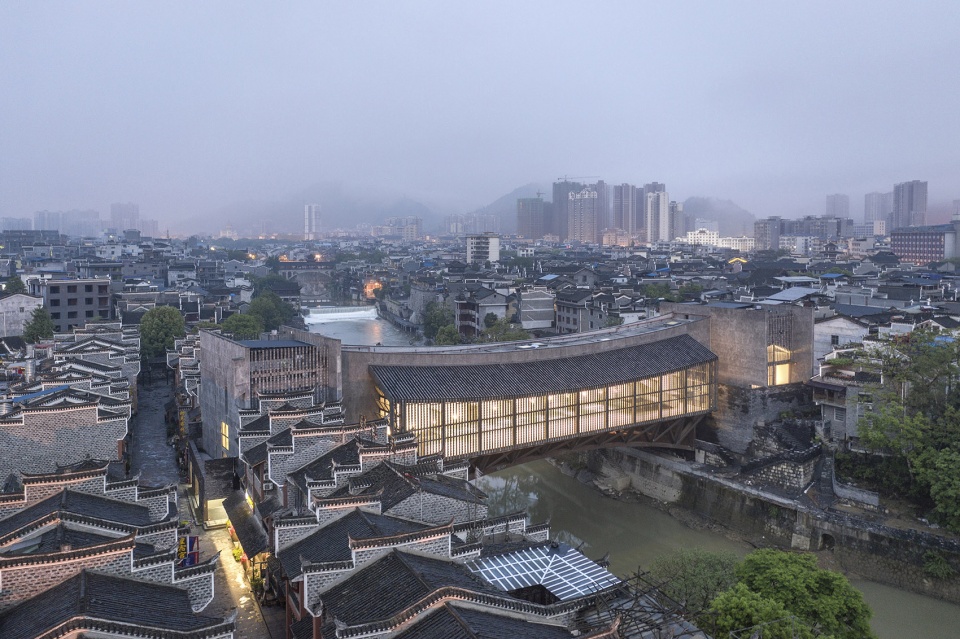
The city of Jishou, where the Jishou Art Museum is located, is the regional capital of Xiangxi (western Hunan), a minority autonomous zone. Initially, the municipal government considered parcels of lands in the development zone outside the city; however, we the architects proposed to build the art museum in the center of the old town because we believed that a cultural facility should be easily accessible. A river called Wanrong runs through the middle of Jishou, which makes the most central location for the art museum over the water course and the art museum then doubles as a pedestrian bridge naturally. We hope that people in Jishou would not only make a special trip to see art but will also encounter art on their way to work, to school, or to shop.
▼黄昏中的美术馆,JAM in early evening ©田方方
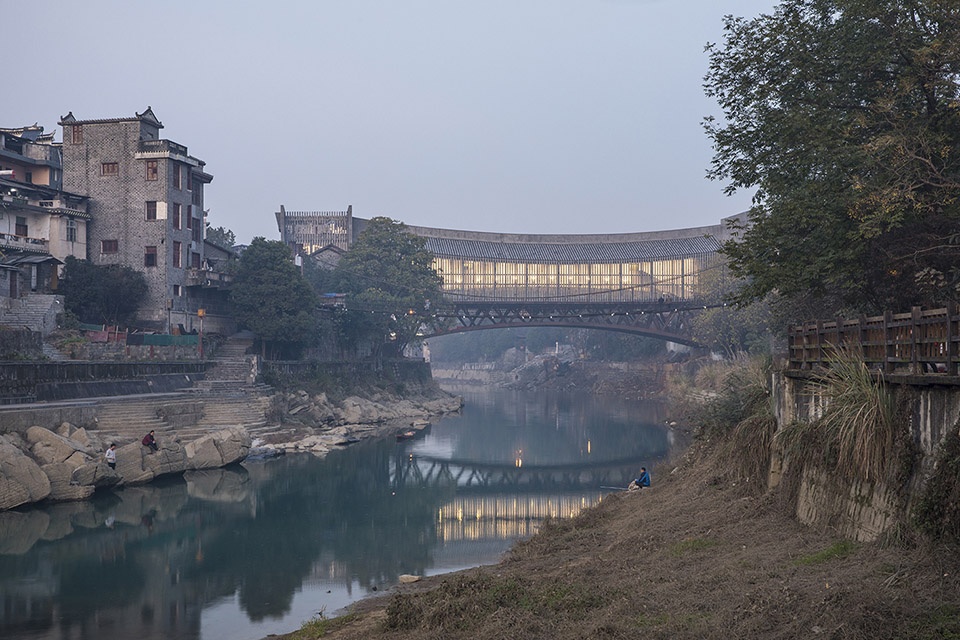
插入肌理 | Urban Intervention
如今,许多诸如博物馆和剧院的当代文化设施都被当作独立的纪念物而远离社区。我们认为美术馆不应该从区位上脱离受众,因此将其嵌入到现有的城市肌理中,两岸的桥头部分与万溶江畔的排屋紧密相连在一起。这些排屋包含了店铺、餐馆、小旅馆,楼上通常便是屋主的居所。因此,吉首美术馆位于河两岸的入口都可以被视作混合功能街道界面的一部分,从而融入当地人的日常生活。
▼吉首美术馆嵌入现有城市肌理,JAM as an insertion in existing urban fabric ©田方方
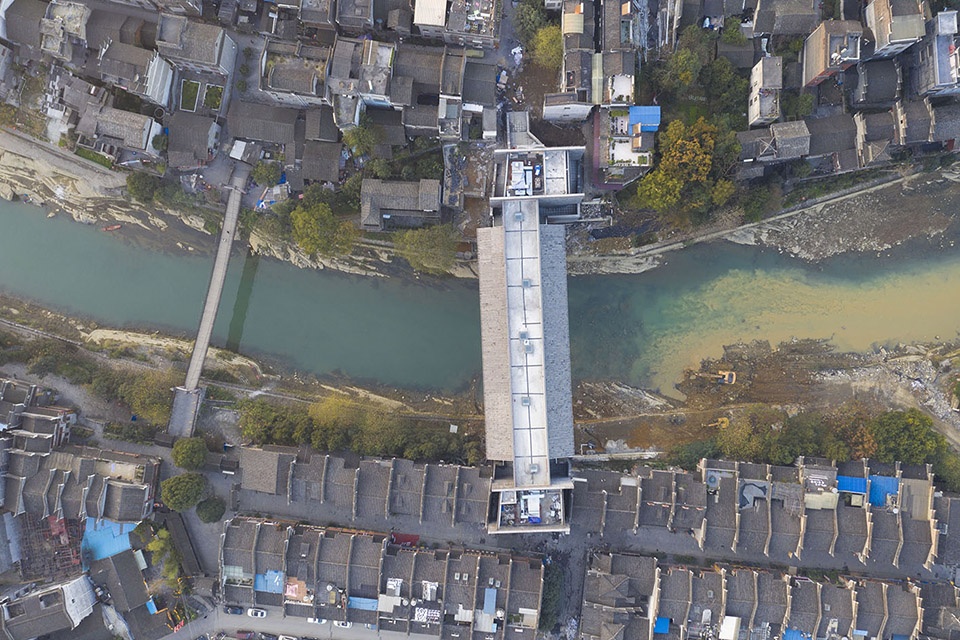
Typical contemporary cultural institutions in China, such as museums and theaters, are treated as freestanding monuments, from away from the communities. In Jishou, since we think an art museum should not be isolated from its users, it is inserted into the existing urban fabric, which is built up with row buildings along the Wanrong River that house shops, restaurants, bed-&-breakfests, often with owners living upstairs. Therefore, the front entrances of the Jishou Art Museum on both riverbanks are part of the mixed-use street walls and integrated into the everyday life.
▼东侧入口,JAM East Side Entrance ©田方方
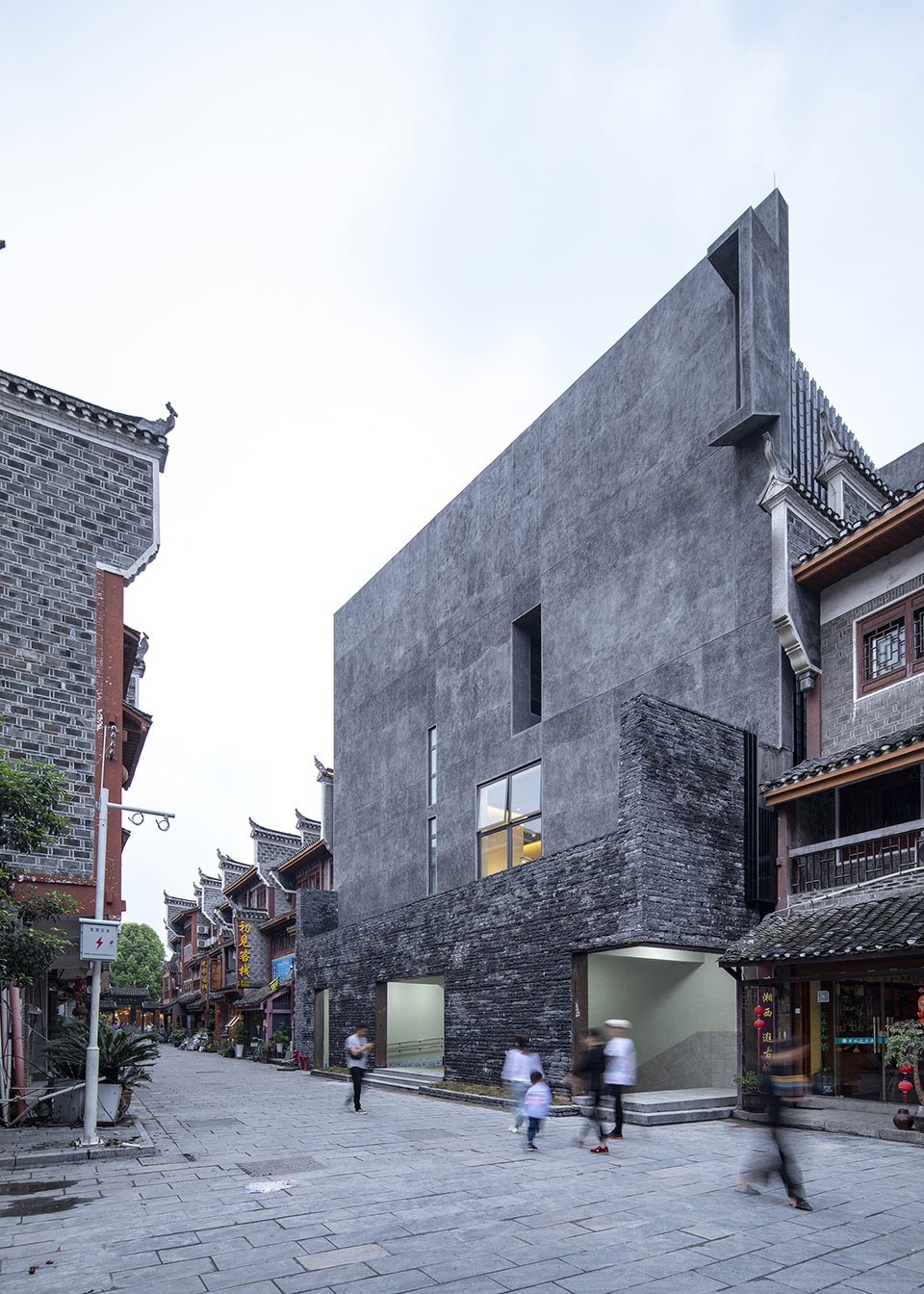
▼从相邻街道看吉首美术馆,Looking at JAM from nearby street ©田方方
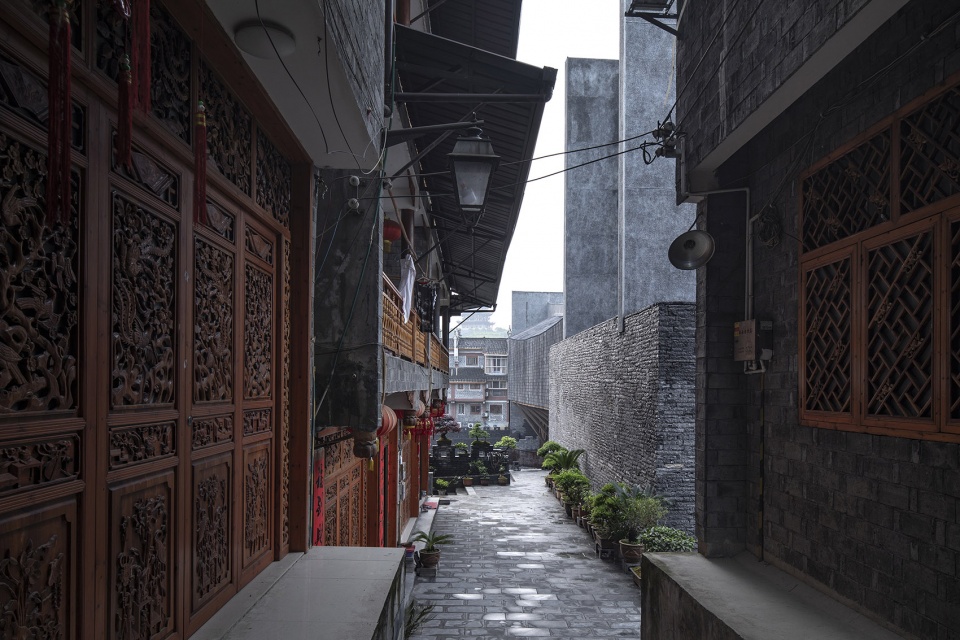
▼西侧入口,JAM West Side Entrance ©田方方
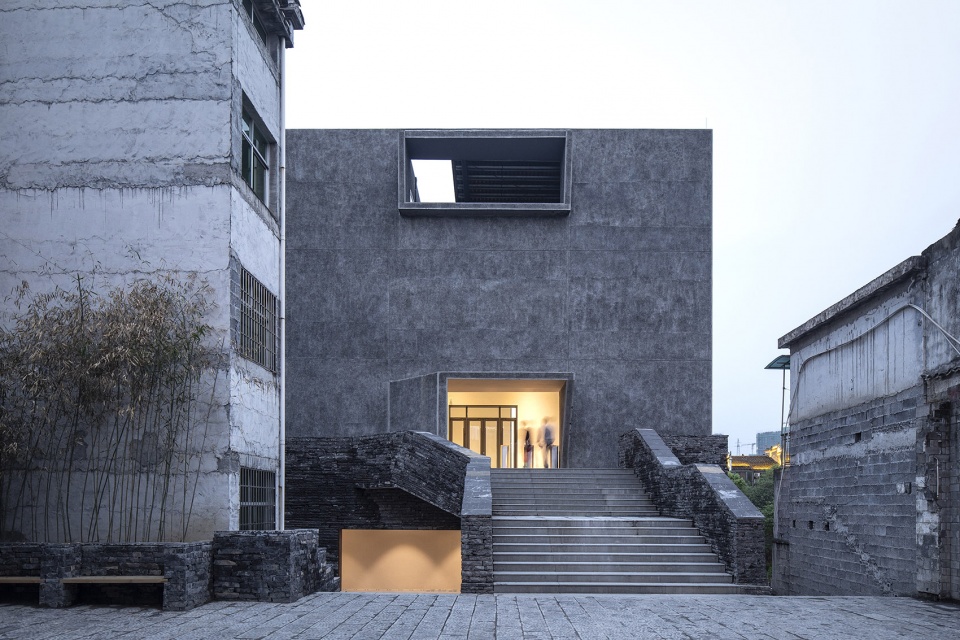
▼西立面局部,JAM West Facade close-up ©田方方
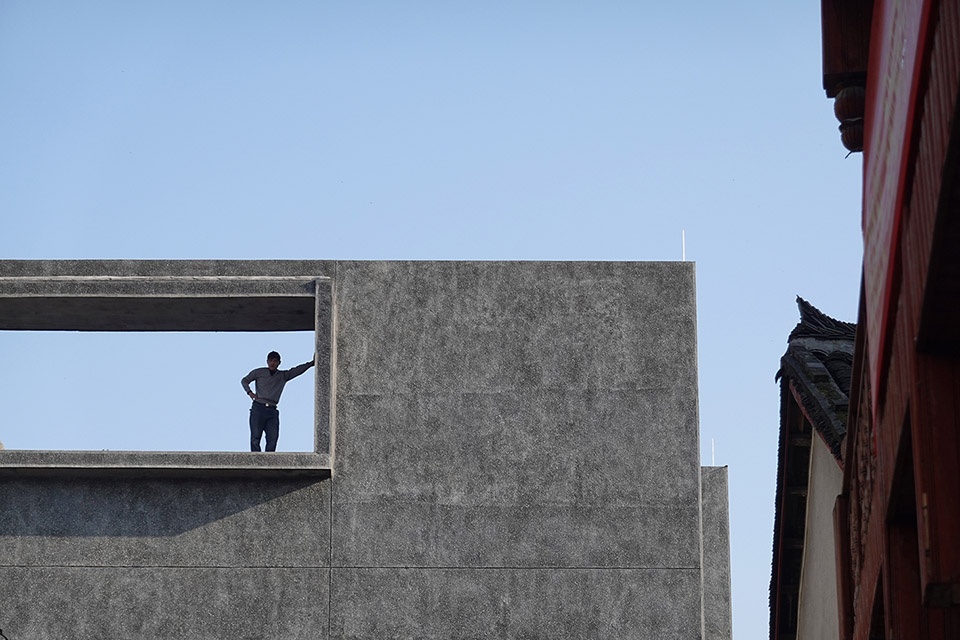
转释传统 | Reinterpretation of Tradition
被称作风雨桥的廊桥在我国山区里有着悠久的历史。除了跨越河流或山谷的功能,它们也是供旅人休憩、商贩摆摊售卖的公共空间。作为对这一古老建筑类型的当代诠释,我们的设计在保持传统廊桥的交通与歇脚功能的同时引入新的艺术内容,并将风雨桥的形式语言加以现代化。
▼风雨桥,Fengyu Qiao
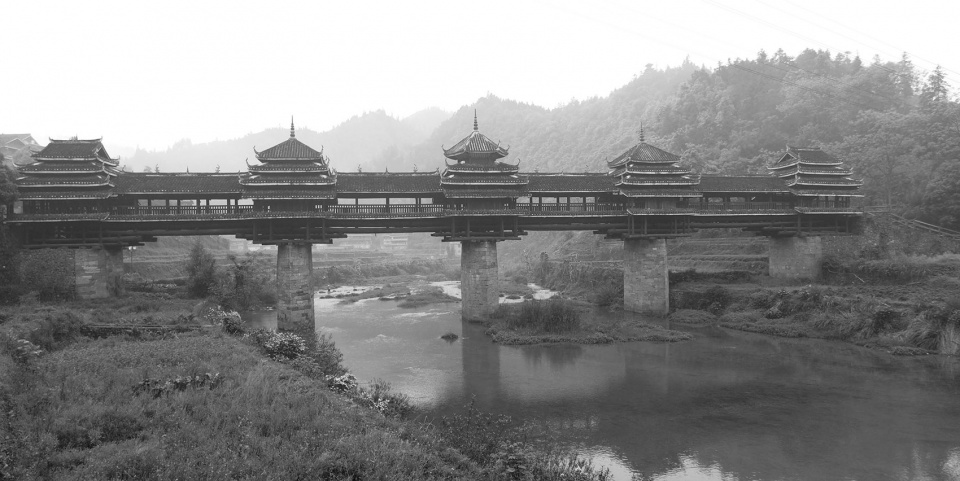
Covered bridge has a long tradition in this mountainous region of China and named Fengyu Qiao, meaning wind-and-rain bridge, which is not only used for crossing river or valley but a public space where travellers take a rest and vendors set up stands. Our design creates a contemporary interpretation of the age-honored building type. We introduced art as a new program on a covered bridge while maintaining pedestrian traffic and stop meanwhile translating the formal language of the Fengyu Qiao into a modern one.
▼万溶江上的吉首美术馆,JAM over Wanrong River ©田方方
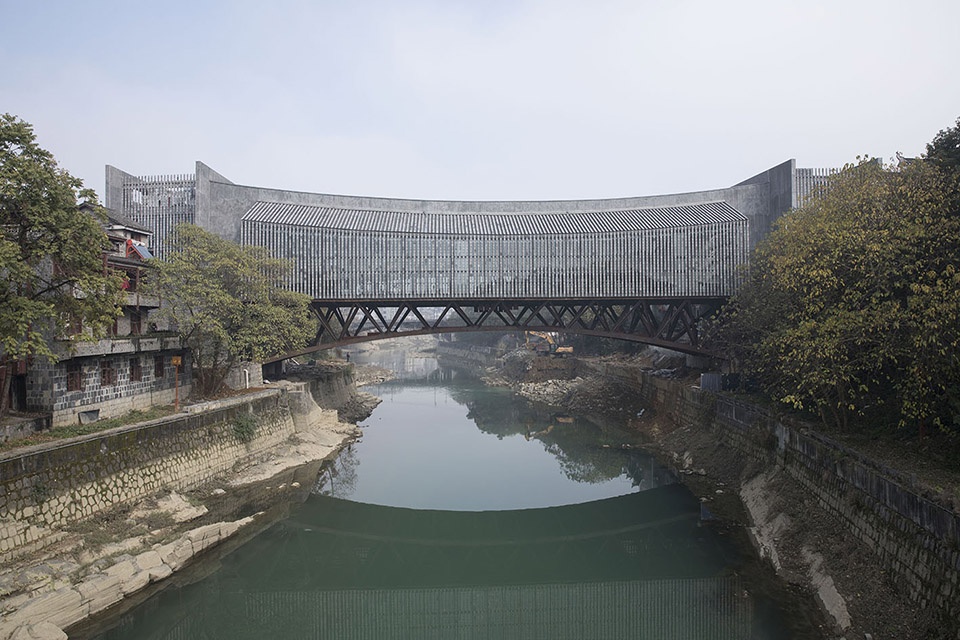
桥梁建筑 | A Bridge-Building
美术馆以桥上桥的形式构成。下层的钢桥是开放的桁架结构,为行人通过提供了一个带顶的街道,同时也助于疏导洪流;上层的现浇混凝土拱桥内部设有画廊。两桥之间是一个由玻璃幕墙和筒瓦遮阳系统围合而成的大展厅,用于举办临时展览。美术馆的服务空间如门厅、行政办公、商店和茶室则被安置在两端的桥头建筑内。人们可以从任意一侧河岸进入美术馆。
▼双层桥设计分析图:钢桥上的混凝土桥,design concept: a concrete bridge on the top of the steel bridge
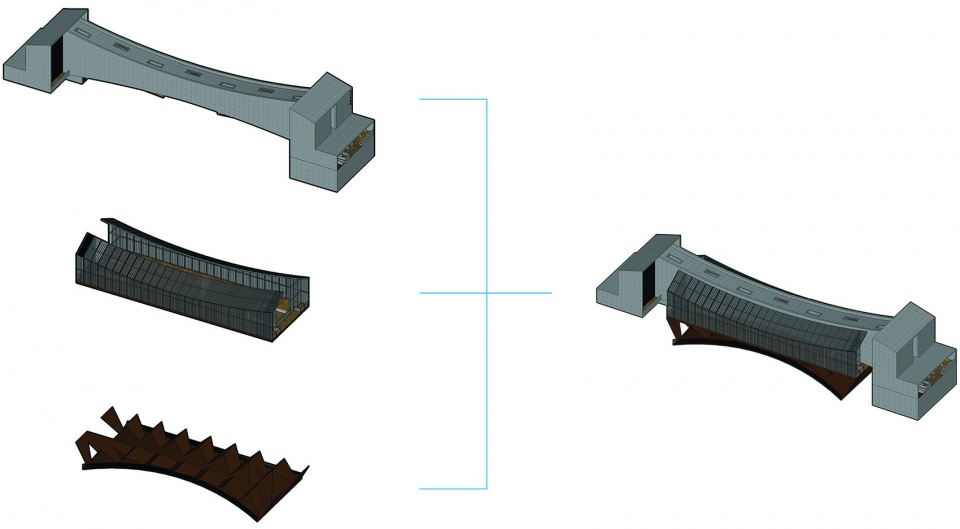
The art museum is composed of two bridges, one on the top of the other. The lower level is an open steel truss structure that resembles a roofed street for pedestrians and allows the flow of floods ; the upper level is a concrete arch cast in-situ with a painting gallery inside. In between the two bridges, glazed walls and tiled shading system enclose the art museum’s main hall for temporary exhibitions. Supplementary spaces to the art museum, such as the entrance hall, administrative office, shop, and tearoom, are situated in the two bridgeheads at either end. People can enter the museum from either side of the river.
▼钢结构桥局部,JAM steel bridge structure close-up ©田方方
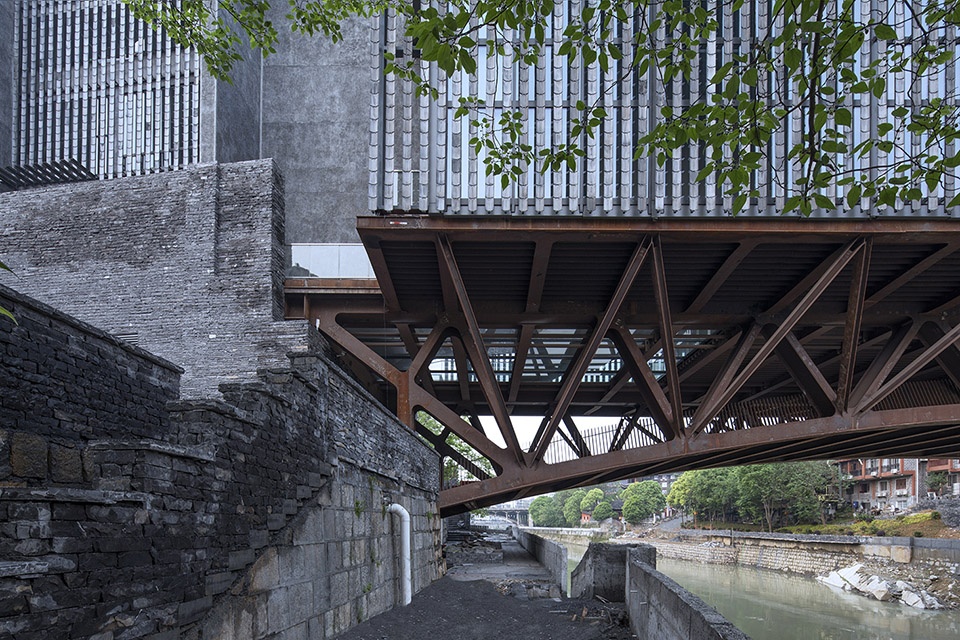
▼桥身立面筒瓦遮阳系统,JAM riverside facade with tiled shading ©田方方
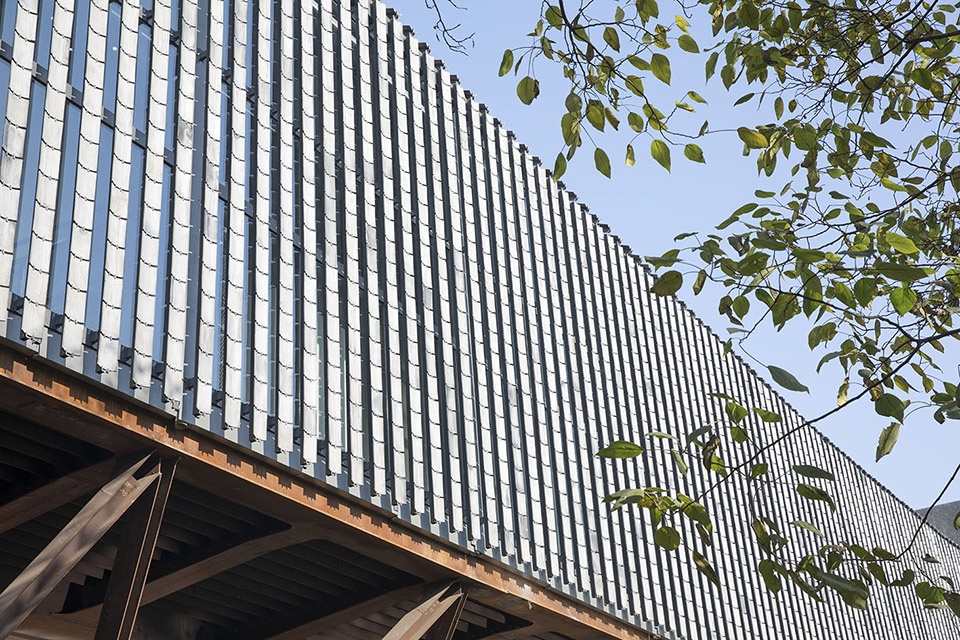
▼透过步行桥天窗仰望大展厅,JAM Pedestrian Bridge Level with skylight looking into Great Exhibition Hall ©田方方
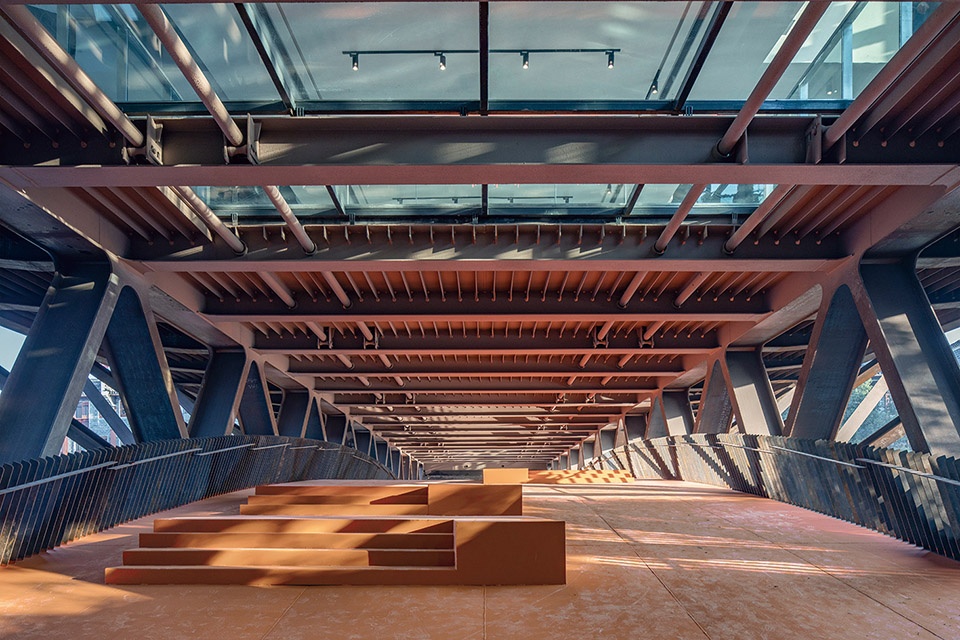
▼步行桥层,JAM Pedestrian Bridge Level ©田方方
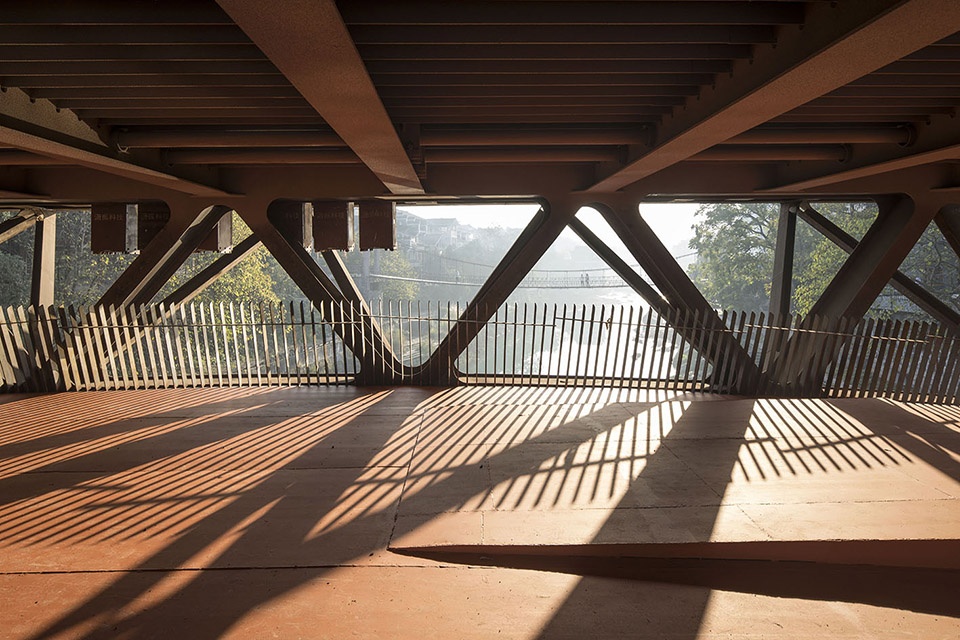
▼大展厅,JAM Great Exhibition Hall ©田方方
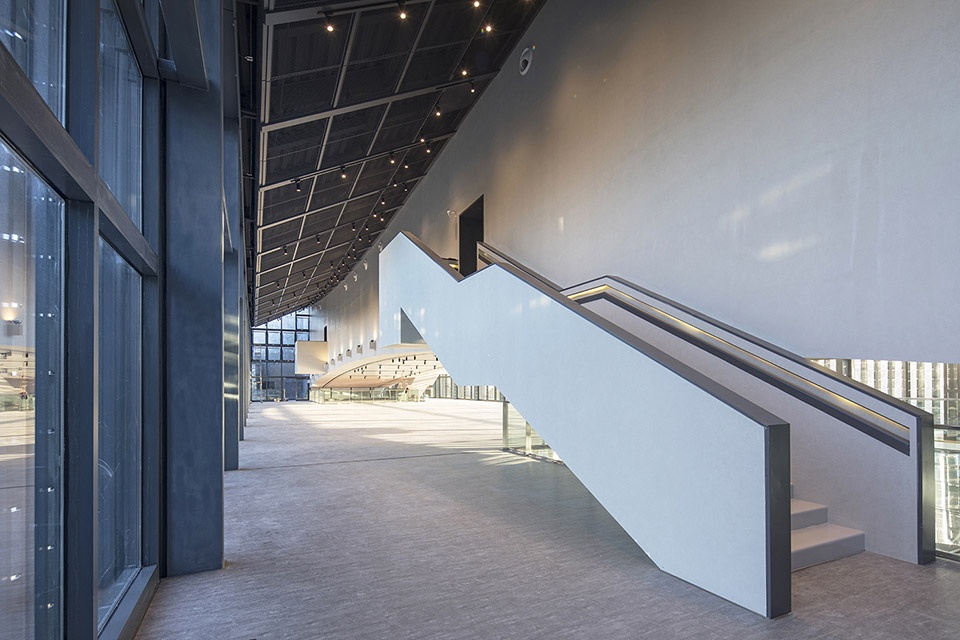
▼大展厅内混凝土拱桥下方,JAM Great Exhibition Hall under the concrete bridge ©田方方
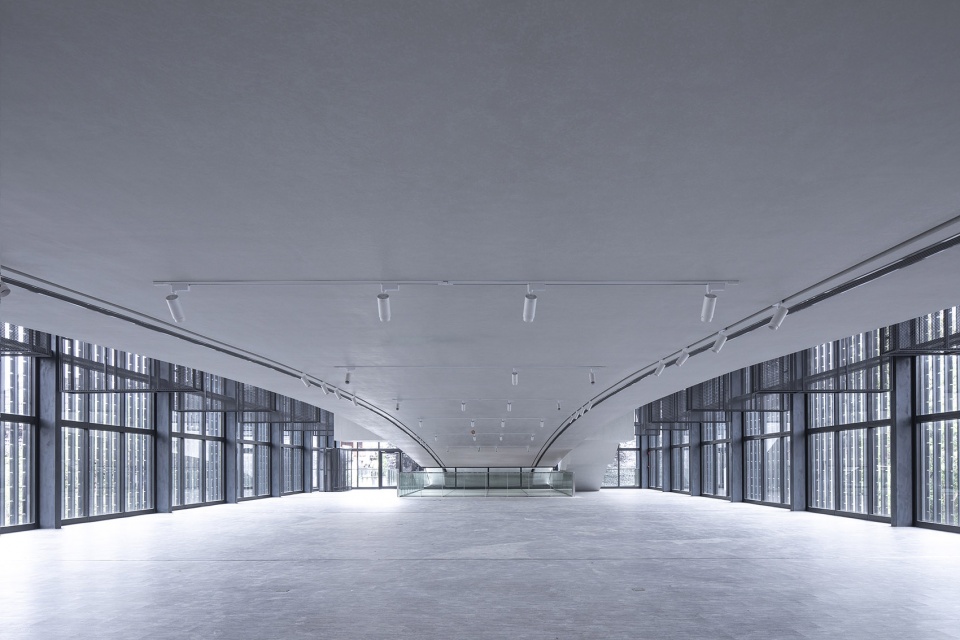
▼由三楼平台看大展厅,JAM Great Exhibition Hall from 3rd floor balcony ©田方方
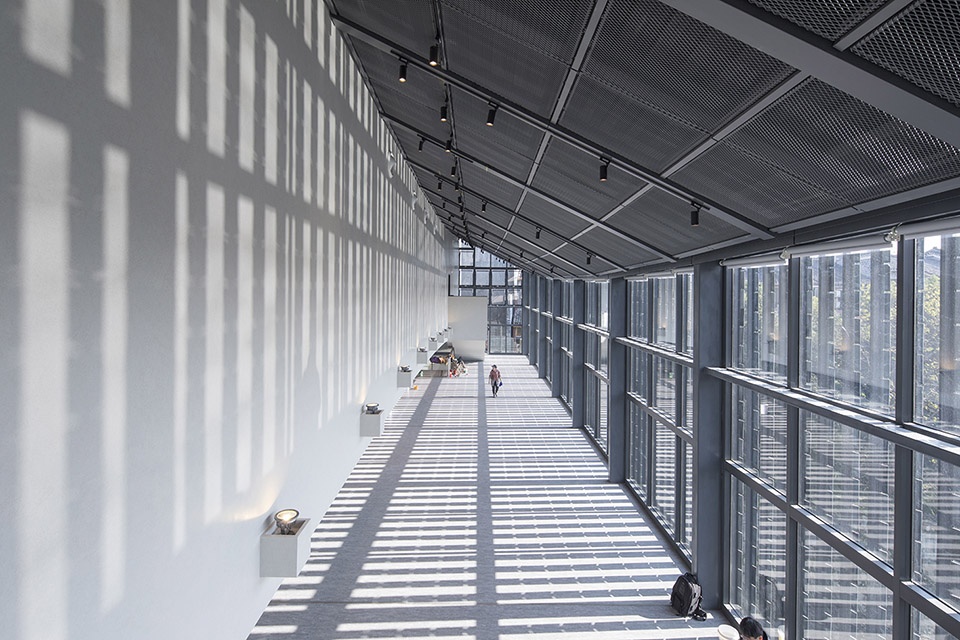
▼三楼混凝土拱桥内部画廊,JAM 3rd floor Painting Gallery inside concrete bridge ©田方方
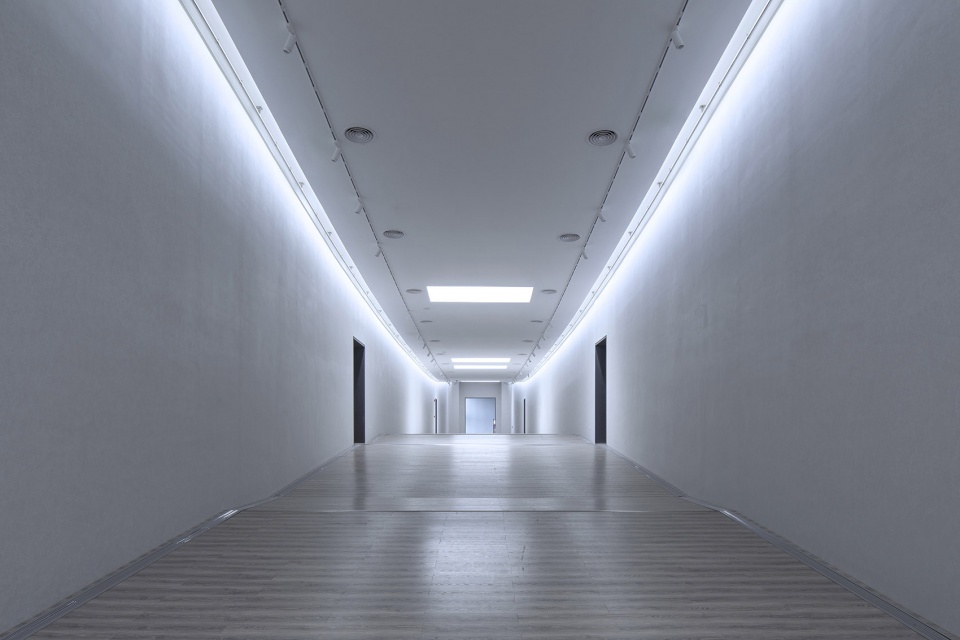
▼过渡空间左墙上的混凝土预应力锚索紧固件,JAM transitional space with post-tensioned prestressing bolt for concrete bridge structure on left wall ©田方方
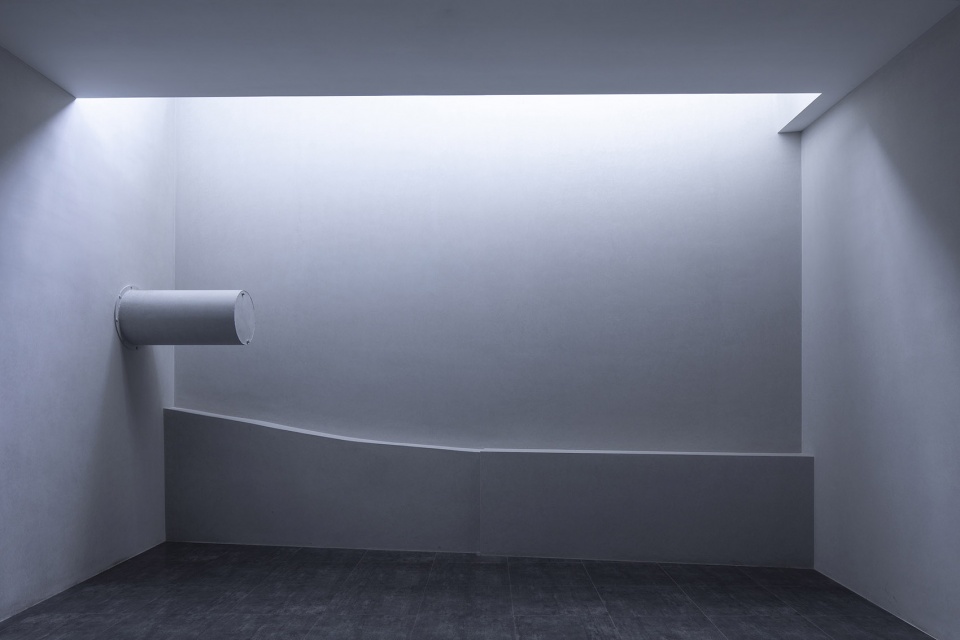
吉首美术馆是艺术家黄永玉先生倡议并捐赠的成果,于2019年4月完工,首展将于夏季开幕。
Jishou Art Museum is the outcome of artist Mr. Huang Yongyu’s initiation and donation, completed in April 2019 and will have its opening exhibition in the summer.
▼东侧入口大厅,JAM East Entry Lobby ©田方方
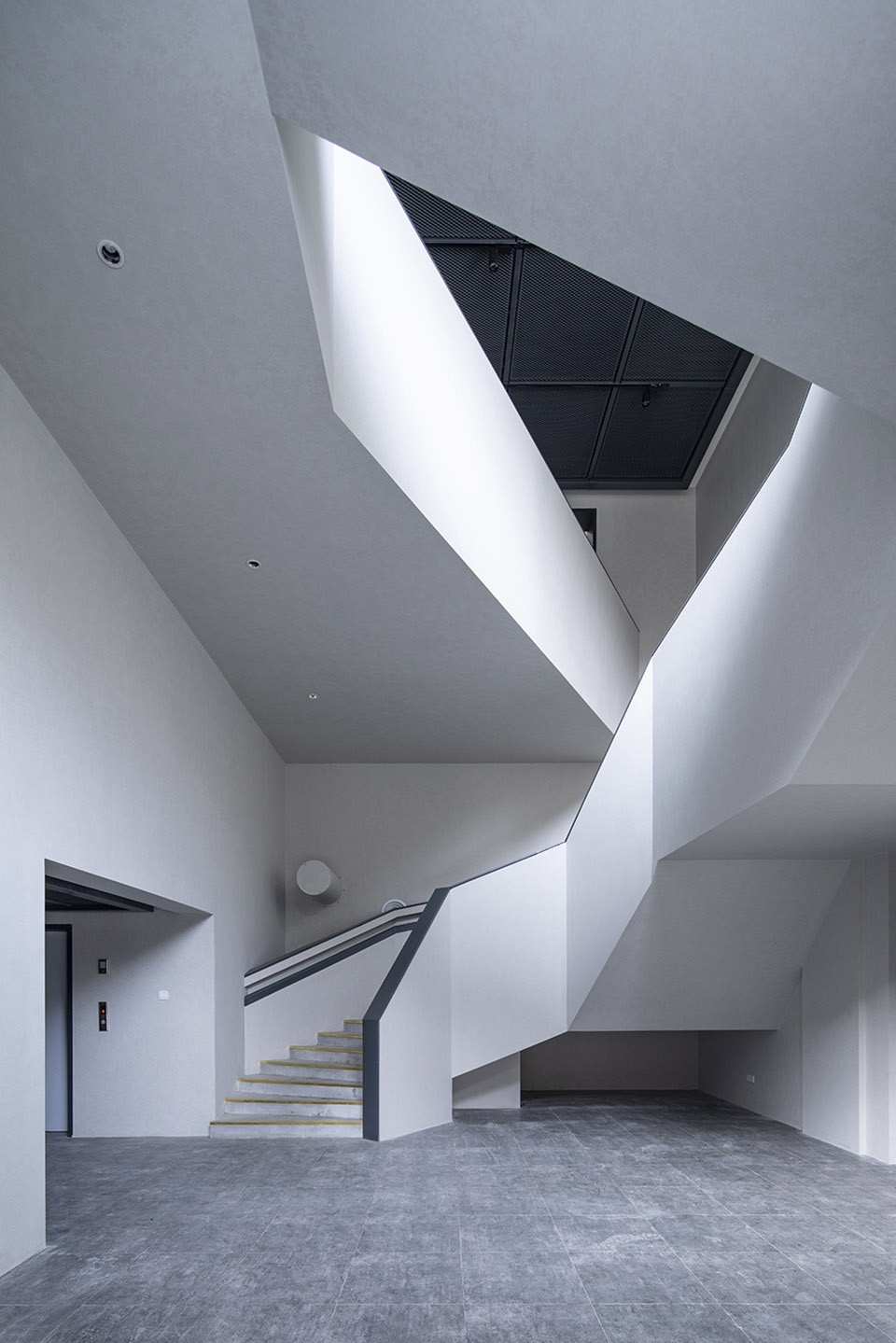
▼东侧大厅楼梯间,JAM East Lobby Staircase ©田方方
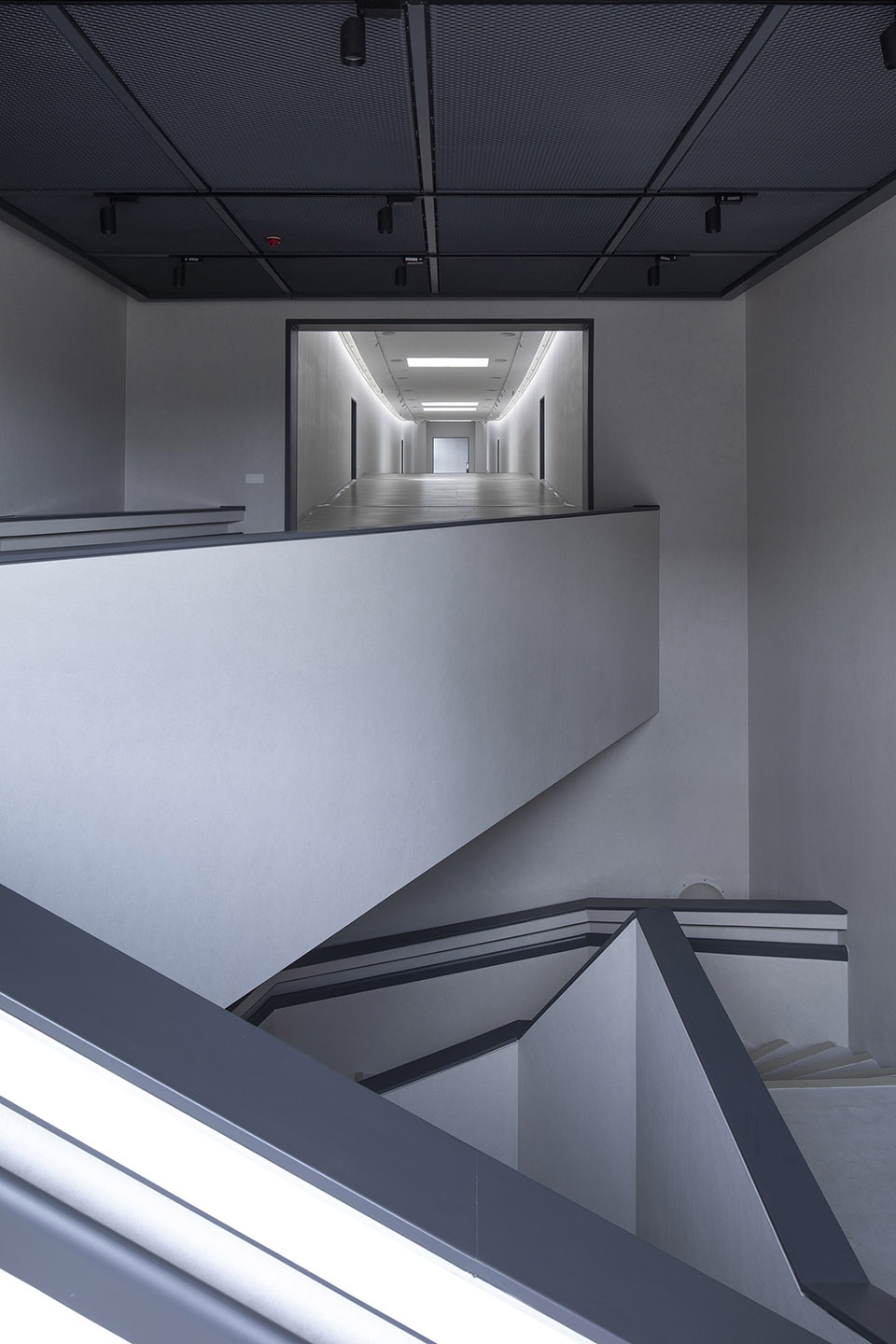
▼大厅末端玻璃幕墙,JAM End Glass Wall of Great Exhibition Hall ©田方方
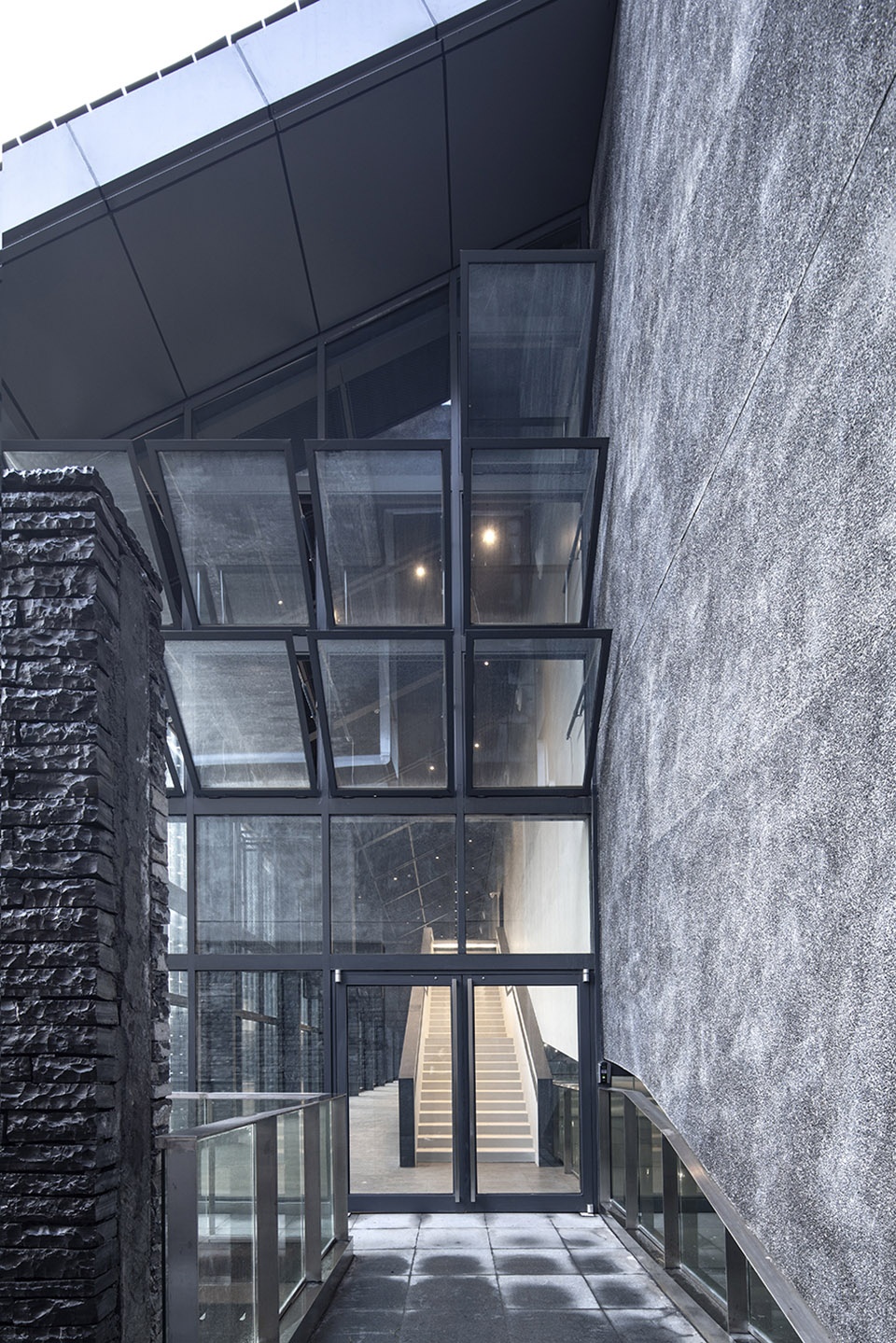
▼总平面图,site plan
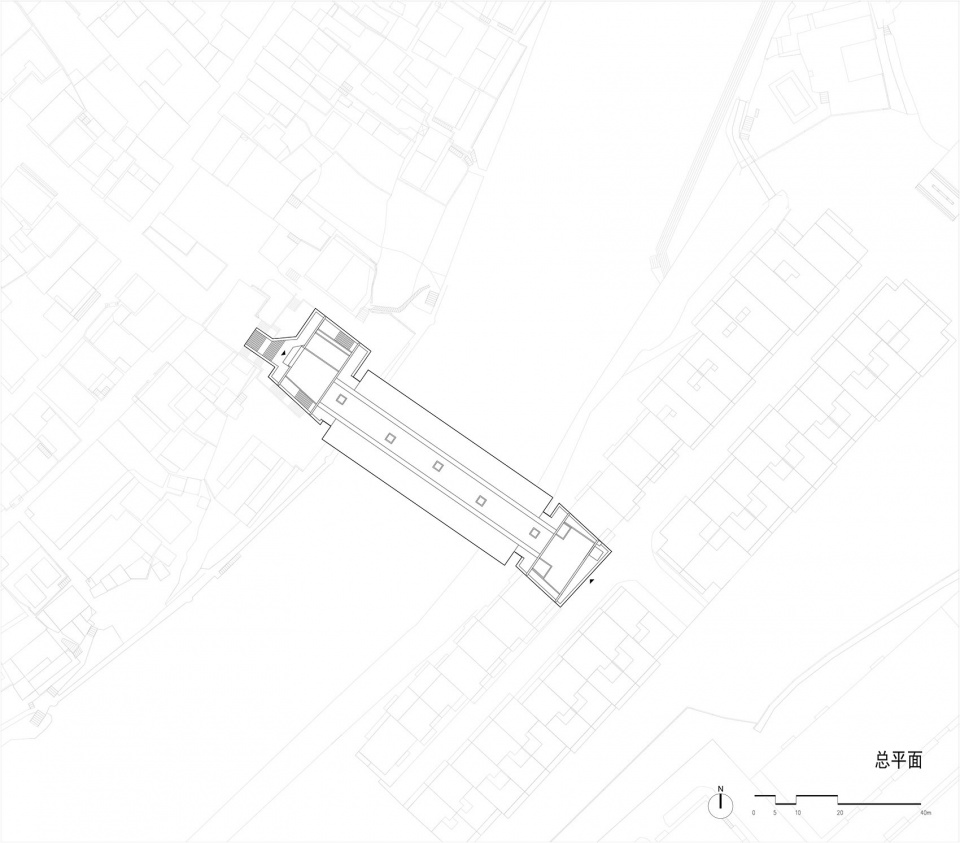
▼首层平面图,1F plan
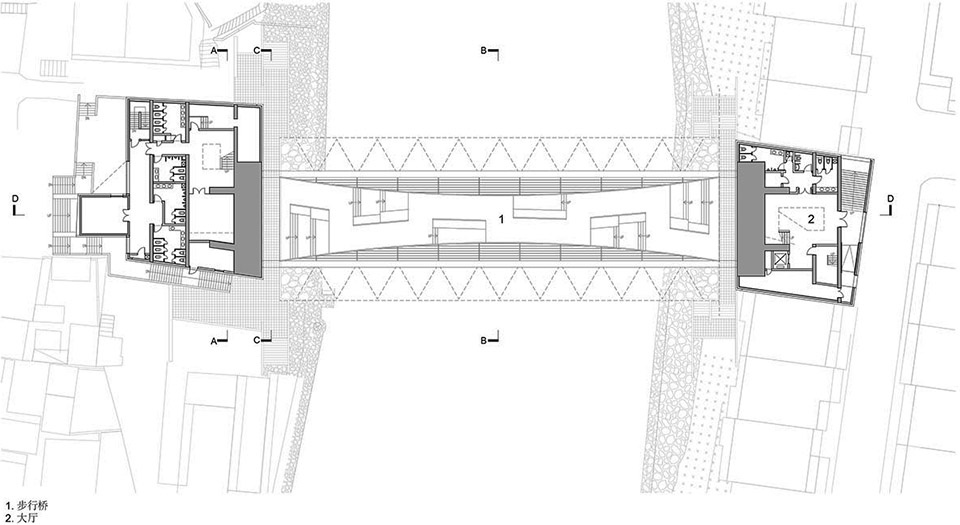
▼2层平面图,2F plan

▼3层平面图,3F plan

▼西立面图和南立面图,west elevation and south elevation
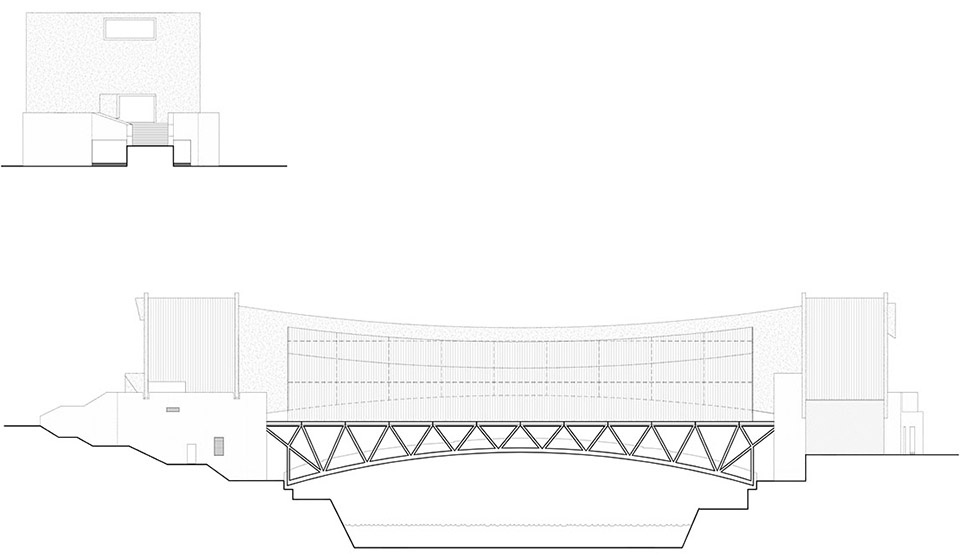
▼剖面图,sections
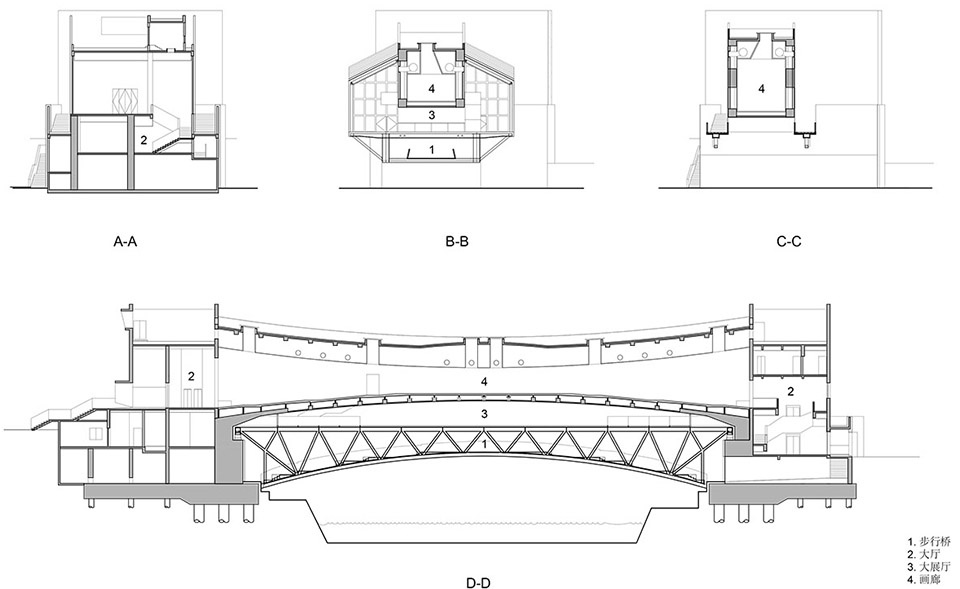
客户/Client: 吉首市德夯风景名胜区管理处/ Jishou Qiangzhou Historic Town Administration
地点/Location: 湖南省吉首市乾州古城/Qiangzhou Historic Town, Jishou, Hunan, China
类型/Building Type: 文化建筑/Cultural Architecture
项目主持设计/Principal Architects: 张永和, 鲁力佳/Yung Ho Chang, Lijia Lu
项目团队/Project Team: 梁小宁,杨普,刘昆朋,粟思齐,饶岗/Liang Xiaoning, Yang Pu, Liu Kunpeng, Su Siqi, Rao Gang
结构咨询/Design Consultant: 常镪/Chang Qiang
建筑面积/Building Area: 3535.4m2
结构材料/Structure and Material: 钢桁架结构,钢筋混凝土拱结构/Steel truss, reinforced concrete arch
设计时间/Design Period: 2013-2016
竣工时间/Completion Time: 2019
摄影师/Photographer: 田方方/Tian Fangfang
来源:本文转载自谷德设计网(gooood)
我们重在分享,尊重原创。如涉及作品内容、版权和其它问题,请与本网联系,我们将在第一时间删除内容!
- 时间 2019-05-08 /
- 作者 /


